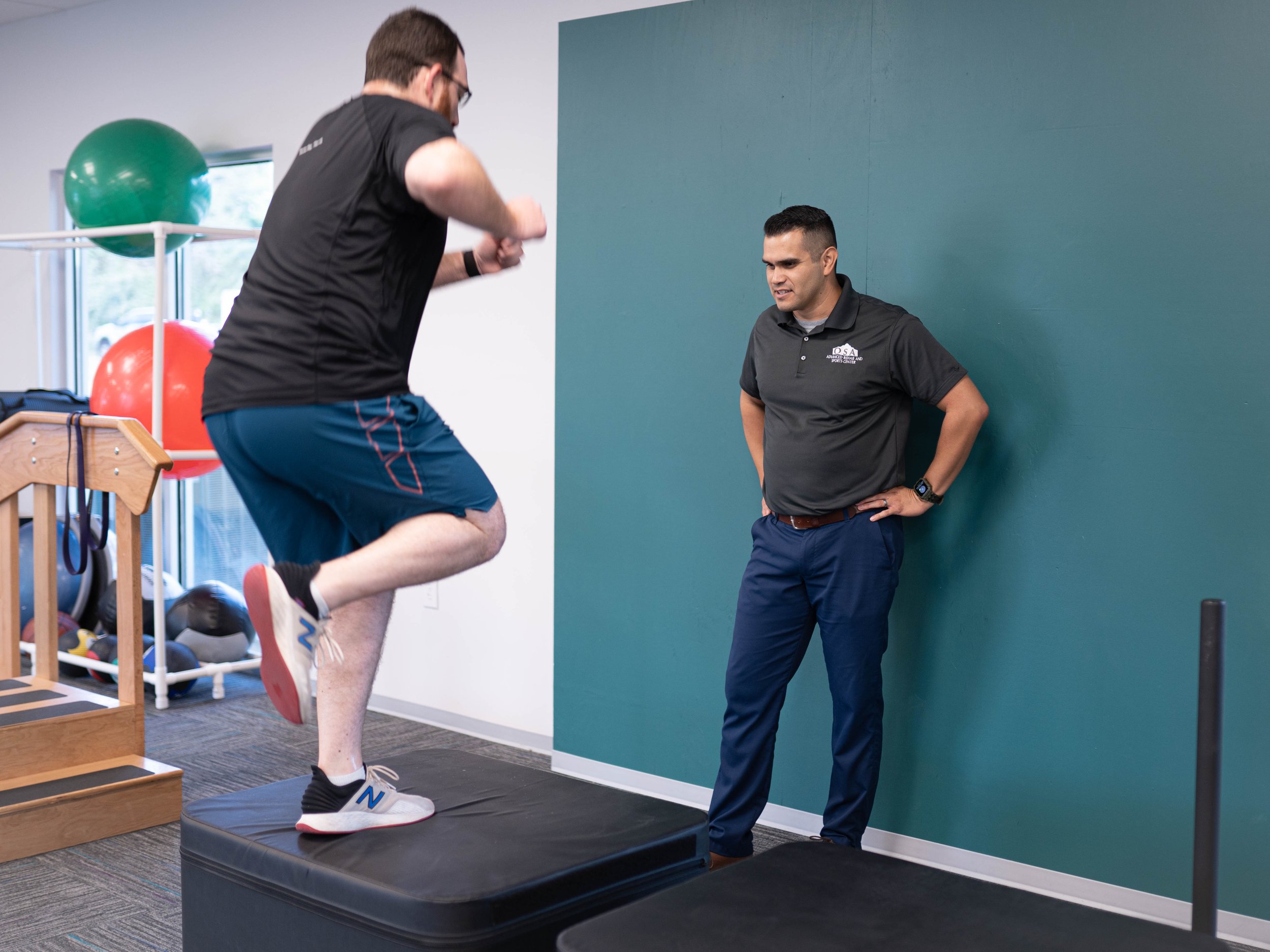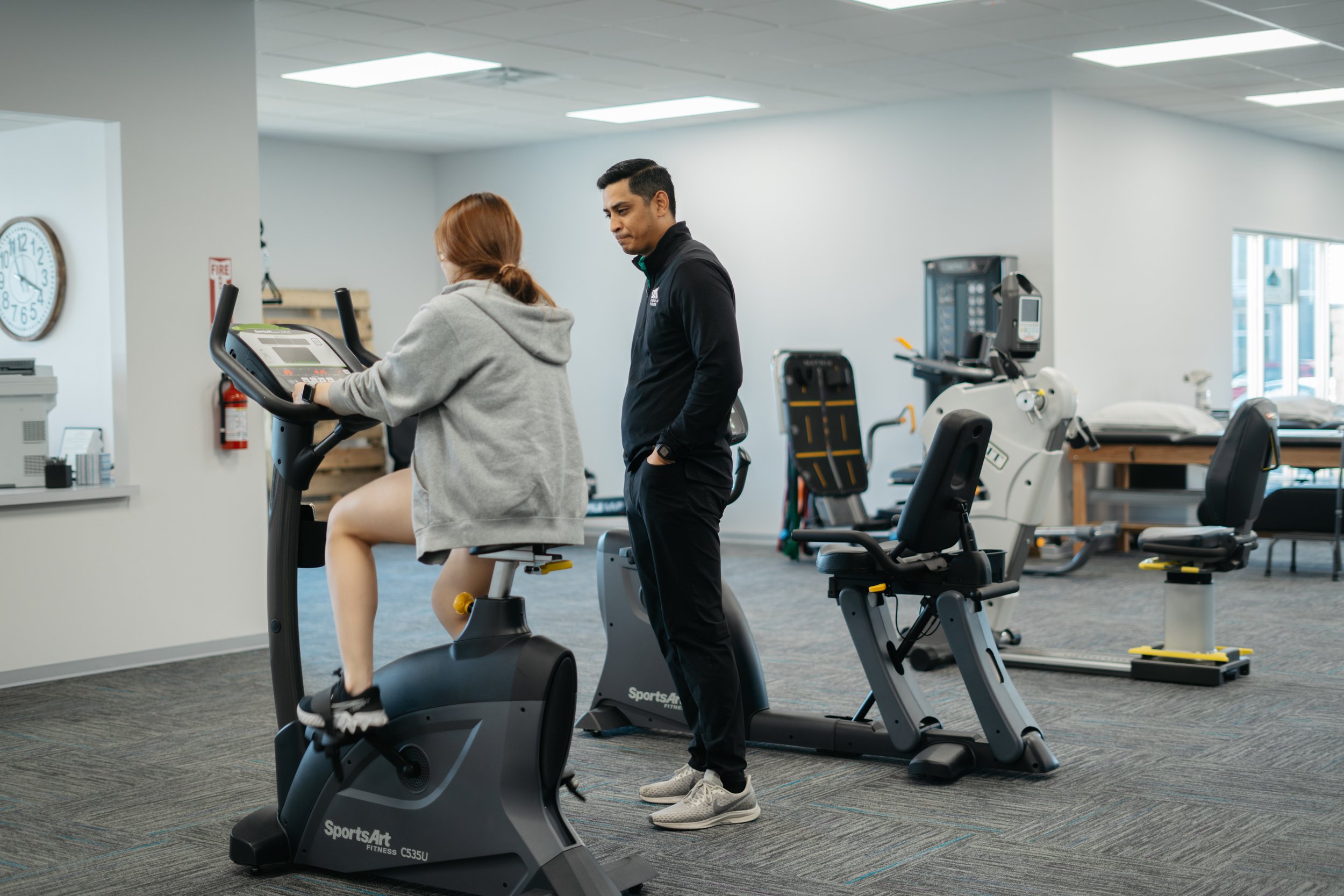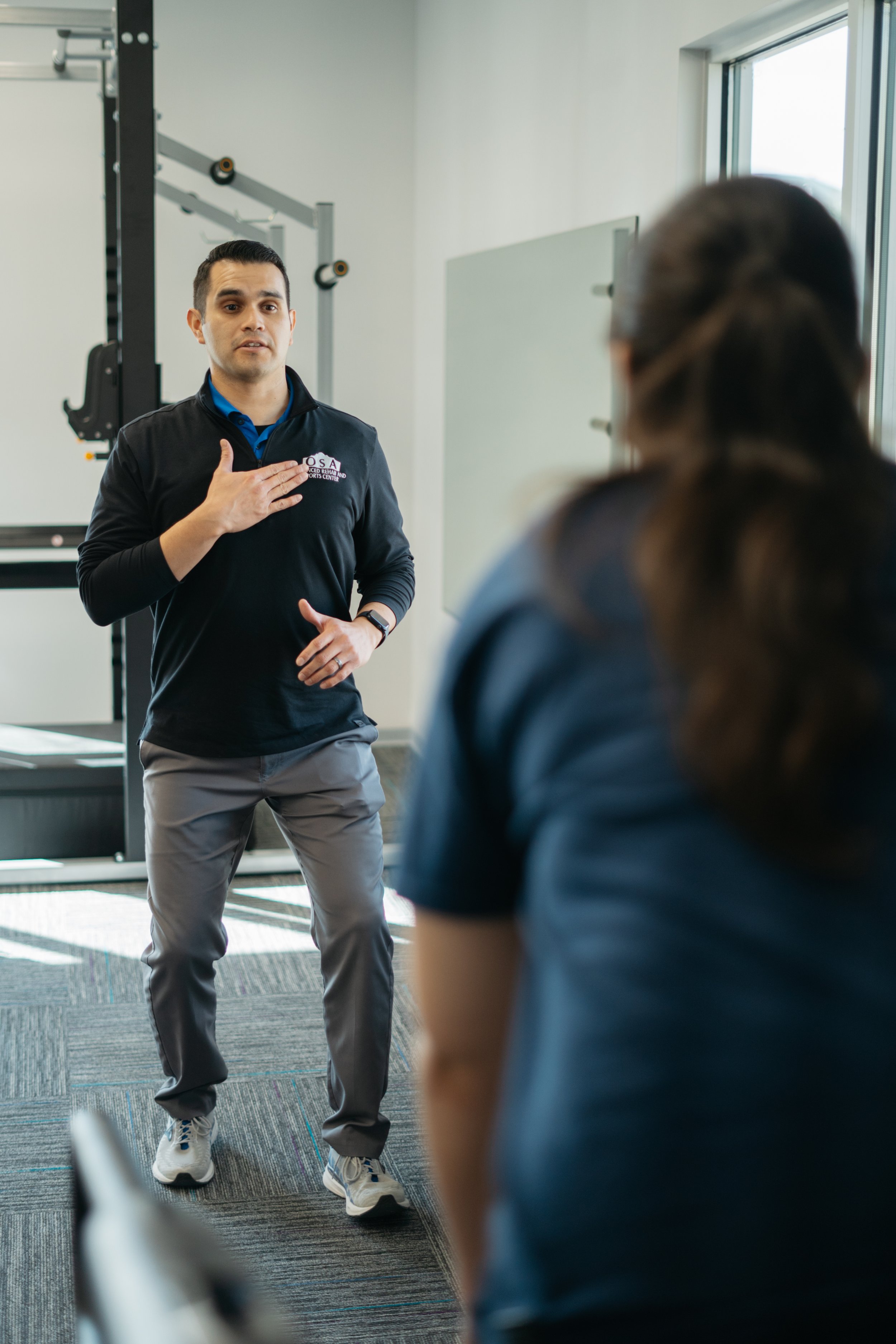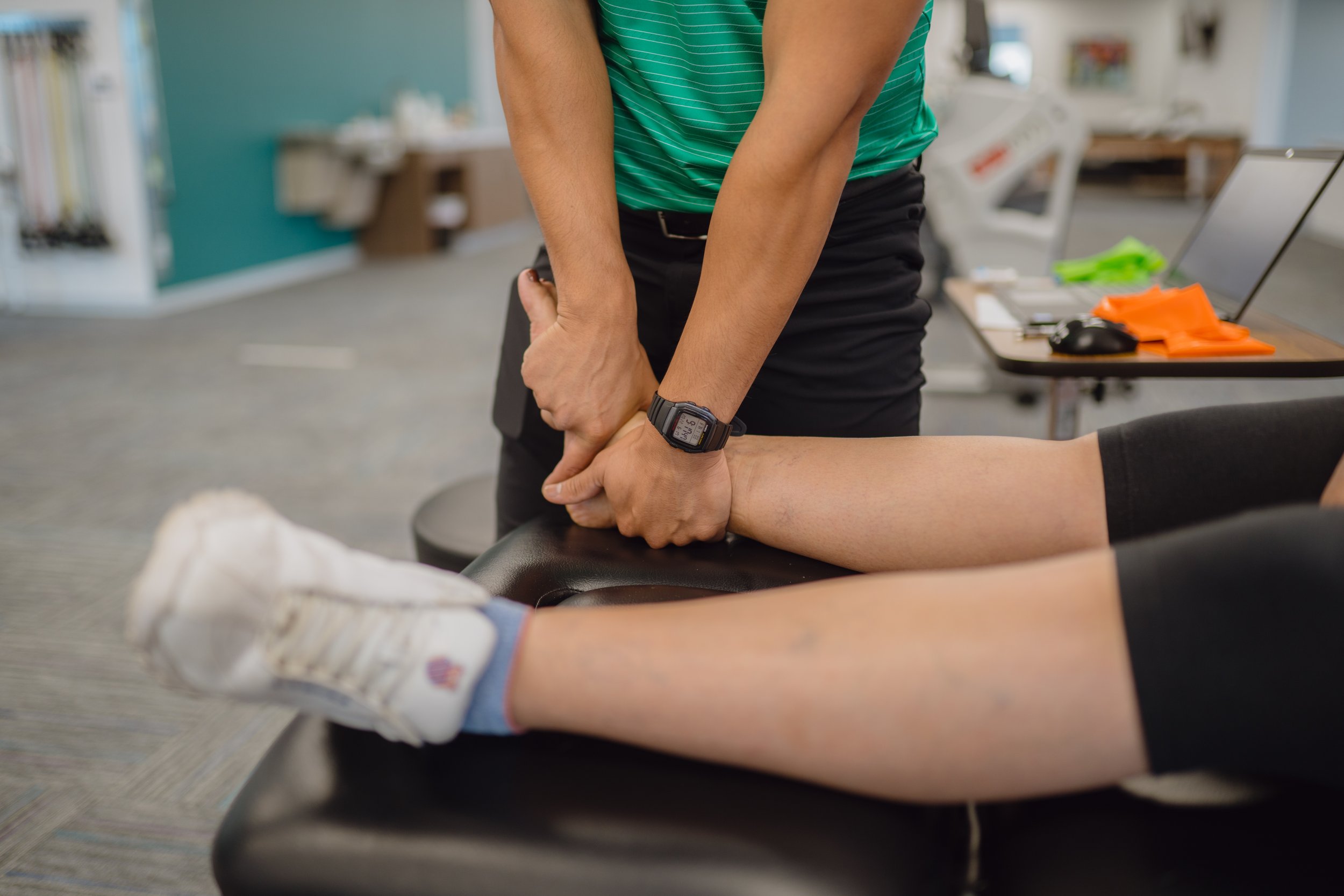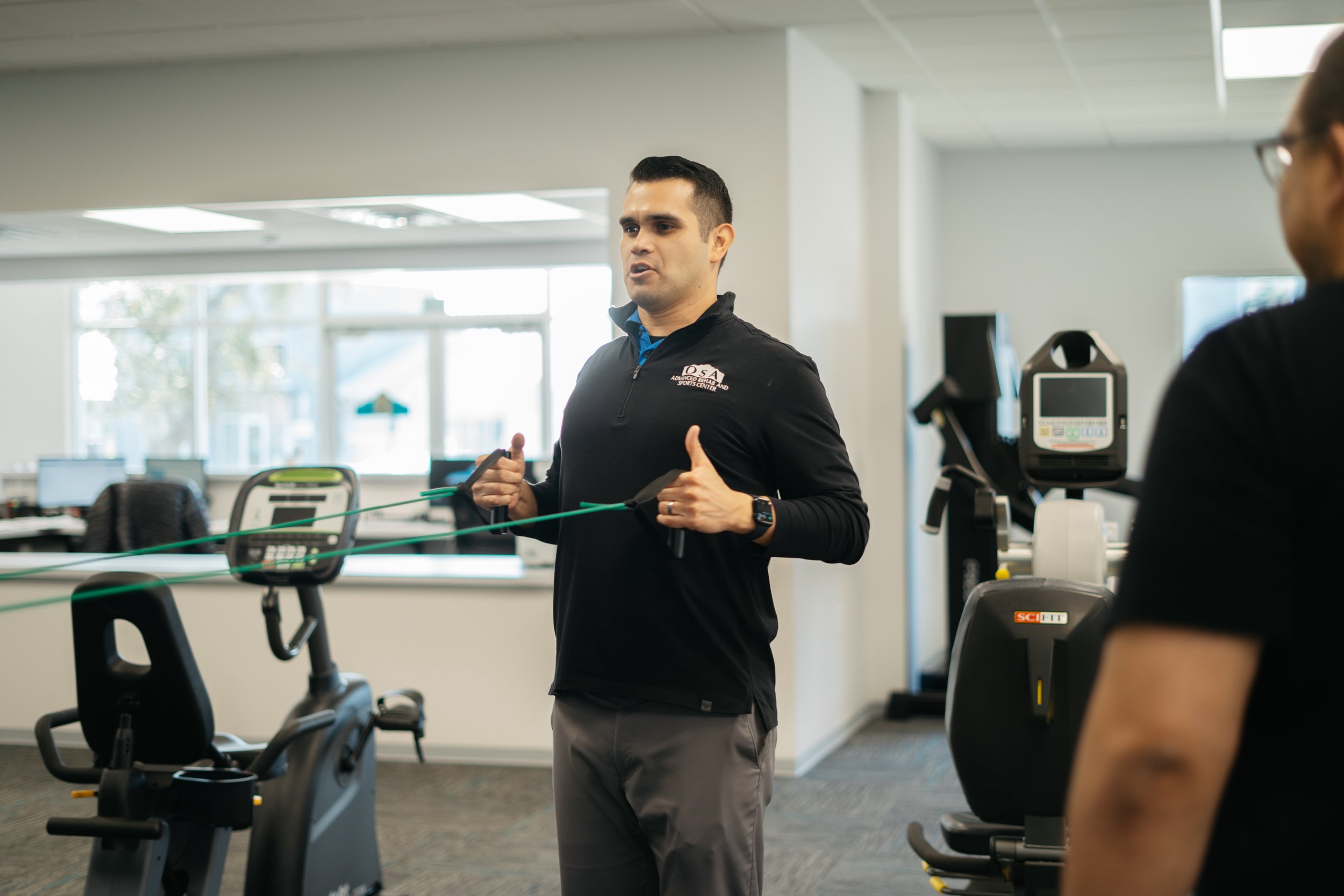Why Should You Get A Return to Sport Assessment?
Why do we conduct RTS testing for our patients, you might ask?
We believe that every person is different in terms of how long they will take to heal from injury, their strength level as they go through the program, and what they still need improvement on.
A return to sport assessment helps us evaluate the needs of each patient. We want our patients to remain confident in their physical health and return to the field with ease.
This testing assessment can be applied to a variety of patients with different injuries such as:
Rotator Cuff Injuries
Shoulder Pain
Upper Cross Syndrome
Herniated Disc Injuries
Lower Cross Syndrome
Golfers Elbow
Tennis Elbow
Hip Flexor Strains
Hamstring Strain
Groin Strain
Quad Strain
Jumper's Knee
ACL Injuries
Ankle Strain
Our program consists of the required steps we feel are necessary for a slow and safe recovery - it starts with light physical activity and gradually increases intensity levels throughout the process until our patients are fully prepared for their RTS assessment.
The key is to target the root of the problem and gain the core strength back in your muscles and surrounding areas without causing further harm to your body. This can involve stretching, bodyweight movements, at-home exercises, and more.
Once we’ve addressed and focused on the patient’s injury and started physical therapy, it’s only a matter of time before they are ready to conduct a return to sport assessment.
This will be how we, as medical professionals, decide whether the patient is ready to be cleared for play.
Our main priority is the patient and their health. That’s what our decisions are based on always, so if we need a little more time to treat your injuries, then it is all in your best interest.


